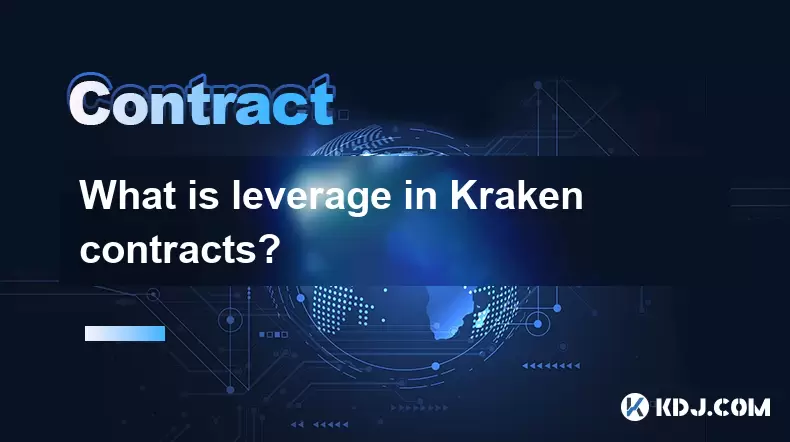-
 Bitcoin
Bitcoin $119000
2.02% -
 Ethereum
Ethereum $4233
-0.58% -
 XRP
XRP $3.182
-1.09% -
 Tether USDt
Tether USDt $1.000
-0.01% -
 BNB
BNB $804.0
0.52% -
 Solana
Solana $183.2
1.27% -
 USDC
USDC $0.9998
0.00% -
 Dogecoin
Dogecoin $0.2335
-2.82% -
 TRON
TRON $0.3384
0.95% -
 Cardano
Cardano $0.8003
-0.61% -
 Hyperliquid
Hyperliquid $45.12
1.98% -
 Chainlink
Chainlink $22.14
3.65% -
 Stellar
Stellar $0.4440
-0.46% -
 Sui
Sui $3.858
-1.36% -
 Bitcoin Cash
Bitcoin Cash $569.6
-0.25% -
 Hedera
Hedera $0.2578
-2.58% -
 Ethena USDe
Ethena USDe $1.001
-0.03% -
 Avalanche
Avalanche $23.76
-3.06% -
 Litecoin
Litecoin $123.7
2.27% -
 Toncoin
Toncoin $3.337
-1.91% -
 UNUS SED LEO
UNUS SED LEO $9.051
0.54% -
 Shiba Inu
Shiba Inu $0.00001355
-1.80% -
 Uniswap
Uniswap $10.90
-0.84% -
 Polkadot
Polkadot $4.047
-1.93% -
 Dai
Dai $1.000
0.00% -
 Cronos
Cronos $0.1628
3.51% -
 Ethena
Ethena $0.7833
5.35% -
 Bitget Token
Bitget Token $4.447
-1.73% -
 Pepe
Pepe $0.00001201
-3.46% -
 Monero
Monero $268.2
-3.37%
What is leverage in Kraken contracts?
Kraken allows up to 50x leverage on futures, amplifying both gains and risks, with liquidation protections and real-time margin monitoring for traders.
Aug 09, 2025 at 09:42 pm

Understanding Leverage in Kraken Futures Trading
Leverage in Kraken contracts refers to the ability to control a larger position in a financial instrument using a relatively small amount of capital. When trading futures on Kraken, leverage allows traders to amplify both potential gains and losses. For example, with 5x leverage, a trader can control a $5,000 position by only putting up $1,000 of their own funds. This mechanism is particularly popular among experienced traders seeking to maximize capital efficiency.
Kraken offers leverage across its futures contracts, which are derivative products based on the price of underlying cryptocurrencies such as BTC, ETH, and SOL. The platform provides different leverage tiers depending on the specific contract and market conditions. Leverage is not a loan in the traditional sense but rather a feature of margin trading, where the exchange extends credit to the trader based on their collateral.
It’s important to note that higher leverage increases risk. While it can magnify profits when the market moves in the trader’s favor, it also accelerates losses. Kraken enforces liquidation mechanisms to protect both users and the platform from excessive losses. When a position moves against a trader and the margin balance falls below the maintenance threshold, the position may be automatically closed.
How Leverage Works on Kraken Futures
When opening a leveraged position on Kraken, traders must first deposit collateral into their futures wallet. This collateral acts as initial margin. The amount of leverage available depends on the selected contract and the size of the position. Kraken supports up to 50x leverage on certain perpetual and quarterly futures contracts.
To illustrate, suppose a trader wants to open a long position on BTC/USD perpetual futures. They choose 10x leverage and allocate $1,000 as margin. This allows them to control a $10,000 position. If the price of Bitcoin increases by 5%, the trader gains $500—representing a 50% return on their initial margin. Conversely, a 5% drop would result in a $500 loss, wiping out half their margin.
Kraken uses a mark price system to determine liquidation levels, which helps prevent manipulation and ensures fair liquidations. The liquidation price is calculated based on the entry price, leverage, fees, and funding rates. Traders can monitor this in real time within the Kraken Futures interface.
Setting Leverage on Kraken: Step-by-Step Guide
Adjusting leverage on Kraken is a manual process that must be done before placing a trade. The following steps outline how to set leverage for a futures contract:
- Log in to your Kraken account and navigate to the Futures trading interface.
- Select the desired contract pair, such as BTC/USD or ETH/USD.
- In the order entry panel, locate the leverage selector—usually displayed as a dropdown or slider.
- Choose your preferred leverage level, such as 5x, 10x, or 50x, depending on the contract’s maximum allowed.
- Confirm the selection before placing your order.
It’s crucial to understand that leverage is not automatically adjusted. Each new position requires manual configuration. If you open multiple positions on the same contract, each can have a different leverage level. Kraken does not allow changing leverage after a position is opened unless the position is partially closed and reopened.
Additionally, Kraken provides a risk limit system for high-leverage trades. This means that increasing leverage may require increasing the risk limit, which affects the maximum position size you can hold. This system is designed to manage systemic risk on the platform.
Types of Contracts and Leverage Availability
Kraken offers several types of futures contracts, each with different leverage capabilities:
- Perpetual futures: These have no expiration date and support up to 50x leverage on major pairs like BTC and ETH.
- Quarterly futures: These expire every quarter and typically offer up to 25x leverage.
- Altcoin futures: Contracts based on smaller cryptocurrencies may offer lower maximum leverage, such as 10x or 20x, due to higher volatility.
The actual leverage available can vary based on market volatility, liquidity, and regulatory considerations. During periods of high volatility, Kraken may temporarily reduce maximum leverage to mitigate risk. Traders should always check the current leverage limits on the contract details page before placing an order.
Each contract also has a funding rate mechanism for perpetuals, which impacts the cost of holding leveraged positions over time. Long positions pay funding to short positions (or vice versa) every 8 hours, depending on the rate. This cost should be factored into any leveraged trading strategy.
Risk Management with Leverage on Kraken
Using leverage requires strict risk management practices. Kraken provides several tools to help traders manage exposure:
- Stop-loss and take-profit orders: These allow traders to set automatic exit points to limit losses or secure profits.
- Liquidation price display: The futures interface shows the estimated price at which a position will be liquidated.
- Margin dashboard: Traders can monitor their account health, including margin usage, equity, and unrealized P&L.
It’s recommended to avoid using maximum leverage unless the trading strategy specifically requires it. Many experienced traders use 5x to 10x leverage to balance risk and reward. Over-leveraging can lead to rapid liquidation, especially in volatile markets.
Kraken also employs a deleveraging mechanism in extreme cases. If a trader’s position is highly leveraged and the platform experiences a cascade of liquidations, the system may automatically reduce positions in a pro-rata manner to maintain market stability.
Frequently Asked Questions
Can I change leverage after opening a position on Kraken?
No, you cannot change the leverage of an existing position. To adjust leverage, you must close the current position and open a new one with the desired leverage level.
What happens when my leveraged position gets liquidated?
If your margin falls below the maintenance requirement, Kraken will automatically close your position to prevent further losses. You may lose part or all of your initial margin, and a liquidation fee may be charged.
Is there a minimum account balance required to use leverage on Kraken?
There is no fixed minimum balance, but you must have sufficient funds to meet the initial margin requirement for your chosen leverage and position size. Smaller accounts may be limited in the leverage they can effectively use.
Does Kraken charge extra fees for using high leverage?
Kraken does not charge additional fees based on leverage level. However, higher leverage increases exposure to funding rates and potential liquidation fees, which can impact overall costs.
Disclaimer:info@kdj.com
The information provided is not trading advice. kdj.com does not assume any responsibility for any investments made based on the information provided in this article. Cryptocurrencies are highly volatile and it is highly recommended that you invest with caution after thorough research!
If you believe that the content used on this website infringes your copyright, please contact us immediately (info@kdj.com) and we will delete it promptly.
- LYNO AI & XRP: Decoding the ROI Potential in a Shifting Crypto Landscape
- 2025-08-11 04:30:11
- Cryptos on the Cusp: Cold Wallet, Price Breakouts, and What's Hot Now
- 2025-08-11 04:50:11
- Dogecoin, Meme Coins, and Remittix Utility: What's the Hype?
- 2025-08-11 04:50:11
- Sky Bet, ESPN, and the Spartans Bonus: A Betting Landscape Overview
- 2025-08-11 05:11:16
- Altcoin Buyouts & Market Removals: Crypto Development's Wild Ride
- 2025-08-11 04:30:11
- Bitcoin Banks Arrive: El Salvador's Bold Play with Investment Banks and Crypto
- 2025-08-11 04:55:12
Related knowledge

Is it possible to adjust the leverage on an open position on KuCoin?
Aug 09,2025 at 08:21pm
Understanding Leverage in KuCoin Futures TradingLeverage in KuCoin Futures allows traders to amplify their exposure to price movements by borrowing fu...

What cryptocurrencies are supported as collateral on KuCoin Futures?
Aug 11,2025 at 04:21am
Overview of KuCoin Futures and Collateral MechanismKuCoin Futures is a derivatives trading platform that allows users to trade perpetual and delivery ...

What is the difference between realized and unrealized PNL on KuCoin?
Aug 09,2025 at 01:49am
Understanding Realized and Unrealized PNL on KuCoinWhen trading on KuCoin, especially in futures and perpetual contracts, understanding the distinctio...

How does KuCoin Futures compare against Binance Futures in terms of features?
Aug 09,2025 at 03:22am
Trading Interface and User ExperienceThe trading interface is a critical component when comparing KuCoin Futures and Binance Futures, as it directly i...

How do funding fees on KuCoin Futures affect my overall profit?
Aug 09,2025 at 08:22am
Understanding Funding Fees on KuCoin FuturesFunding fees on KuCoin Futures are periodic payments exchanged between long and short position holders to ...

What is the distinction between mark price and last price on KuCoin?
Aug 08,2025 at 01:58pm
Understanding the Basics of Price in Cryptocurrency TradingIn cryptocurrency exchanges like KuCoin, two key price indicators frequently appear on trad...

Is it possible to adjust the leverage on an open position on KuCoin?
Aug 09,2025 at 08:21pm
Understanding Leverage in KuCoin Futures TradingLeverage in KuCoin Futures allows traders to amplify their exposure to price movements by borrowing fu...

What cryptocurrencies are supported as collateral on KuCoin Futures?
Aug 11,2025 at 04:21am
Overview of KuCoin Futures and Collateral MechanismKuCoin Futures is a derivatives trading platform that allows users to trade perpetual and delivery ...

What is the difference between realized and unrealized PNL on KuCoin?
Aug 09,2025 at 01:49am
Understanding Realized and Unrealized PNL on KuCoinWhen trading on KuCoin, especially in futures and perpetual contracts, understanding the distinctio...

How does KuCoin Futures compare against Binance Futures in terms of features?
Aug 09,2025 at 03:22am
Trading Interface and User ExperienceThe trading interface is a critical component when comparing KuCoin Futures and Binance Futures, as it directly i...

How do funding fees on KuCoin Futures affect my overall profit?
Aug 09,2025 at 08:22am
Understanding Funding Fees on KuCoin FuturesFunding fees on KuCoin Futures are periodic payments exchanged between long and short position holders to ...

What is the distinction between mark price and last price on KuCoin?
Aug 08,2025 at 01:58pm
Understanding the Basics of Price in Cryptocurrency TradingIn cryptocurrency exchanges like KuCoin, two key price indicators frequently appear on trad...
See all articles

























































































